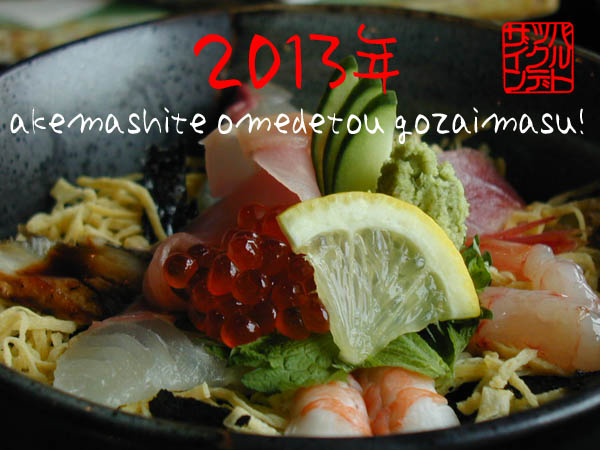UPDATE: by popular demand, here is the information to reach the spa in Singapore where our tubs are located and give it a try!
IKEDA SPA – website: http://www.ikedaspa.com/treatments/signature
The big hinoki + small hinoki are at Clarke Quay outlet
The small hinoki is at Bukit Timah outlet
You can also contact IKEDA SPA and ask for their Onsen Hinoki Bath
This time we received the order from a commercial spa.
Apparently, the client was following us and our activity on the homepage for few years and since their are opening a new branch, contacted us for the supply of 3 mid size tubs (suitable for 2 people) and one large tub for 6 people.
We supplied different quotations and updated the proposal according to the design and layout changes that were coordinated between the client and his architect. As the date of the installation was nearing, we did not have the approved drawings…
Of course, important decisions should not be rushed. On the other end from our side, while waiting for a 100% satisfactory layout, we started to assort the material for the job.
We obtained the OK and since we worked also during the holiday period, we managed to ship about 10 days before schedule after all..!
After a long day of work in this cold season, washing away the sweat and fatigue in a steamy soaking tub is one of the best pleasures on earth!
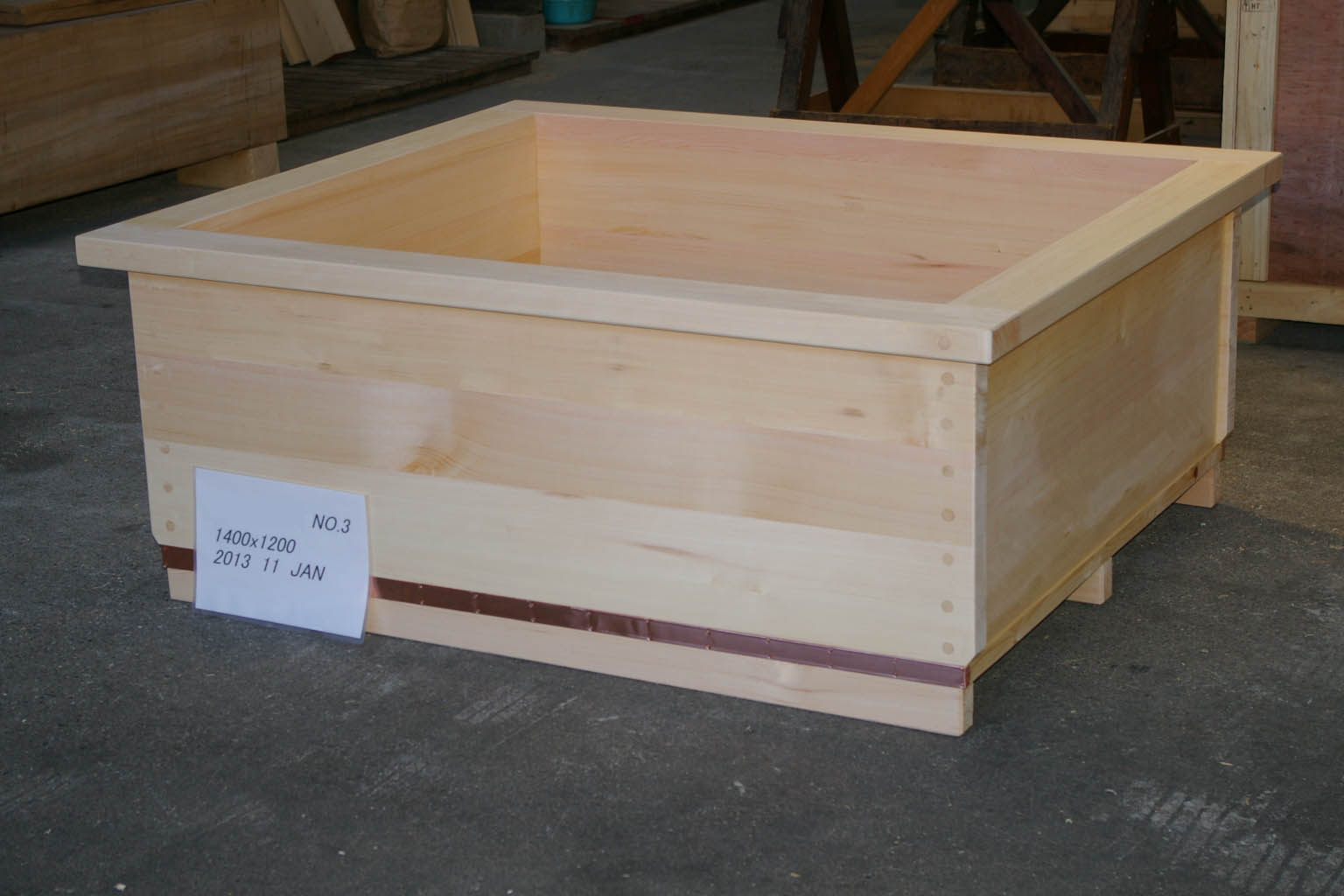
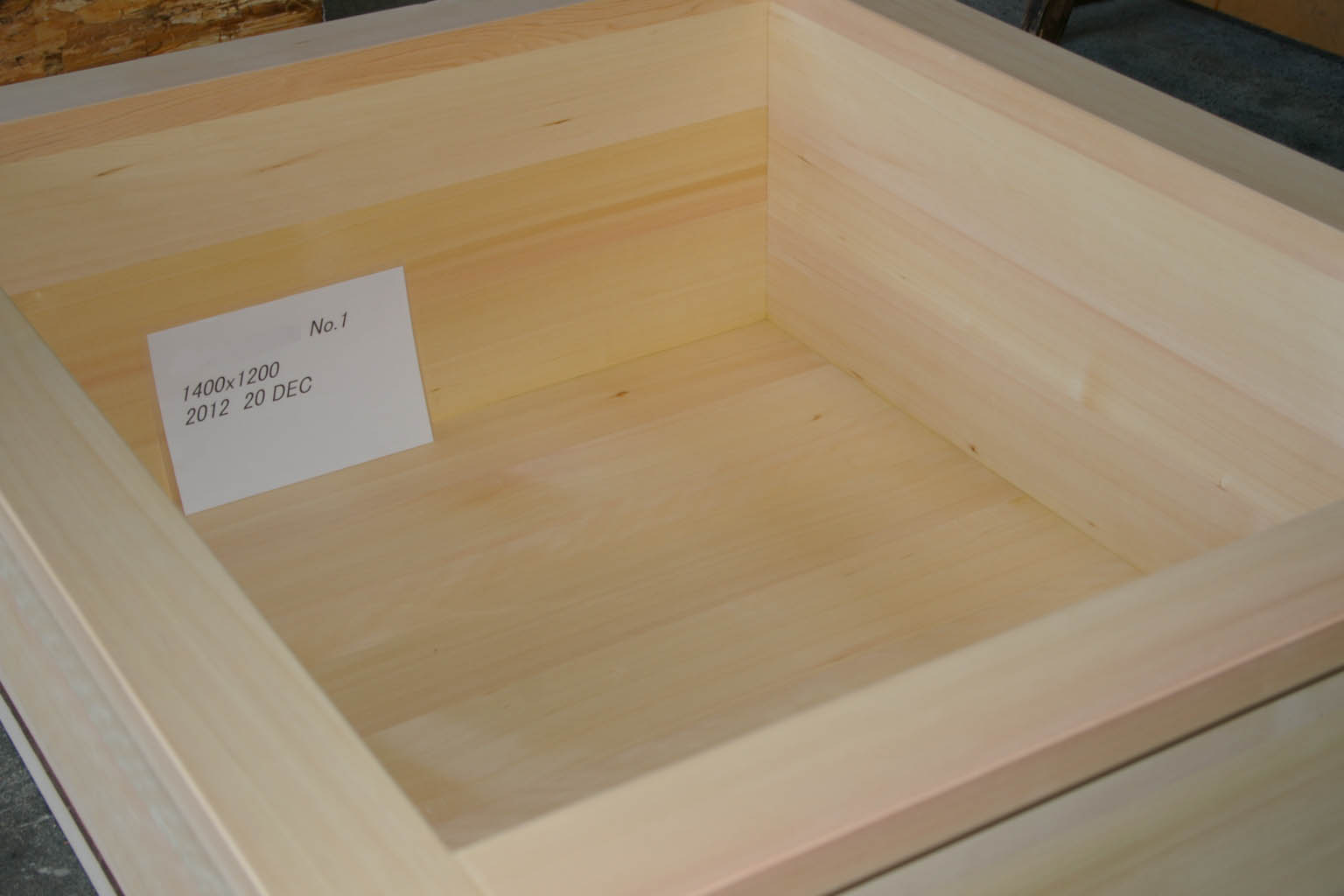
2 person Hinoki wood AB grade tub (3 pieces)
Dimensions are: L1400mm x W1200mm x H558mm (ext. dim.) 471mm (deep)
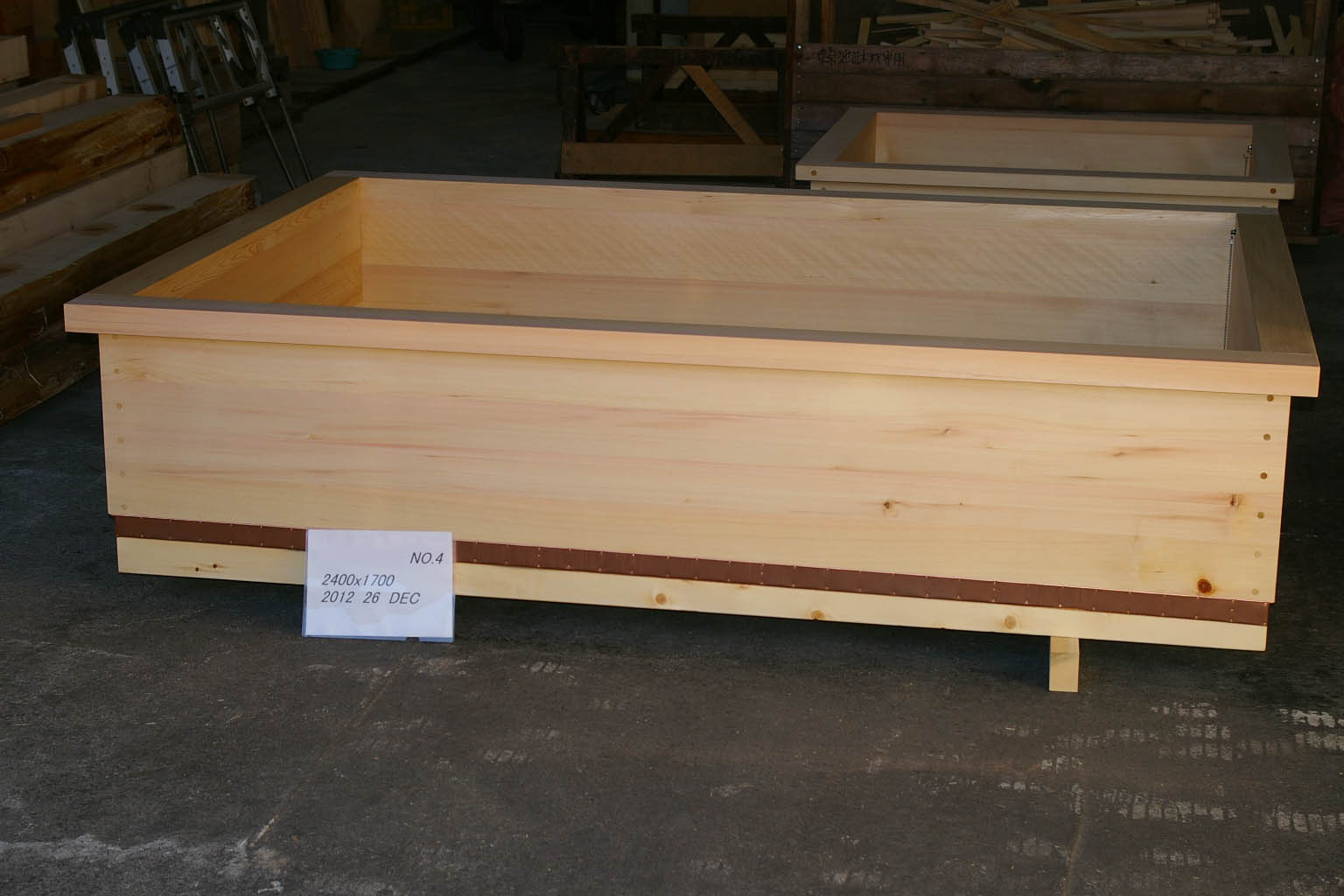
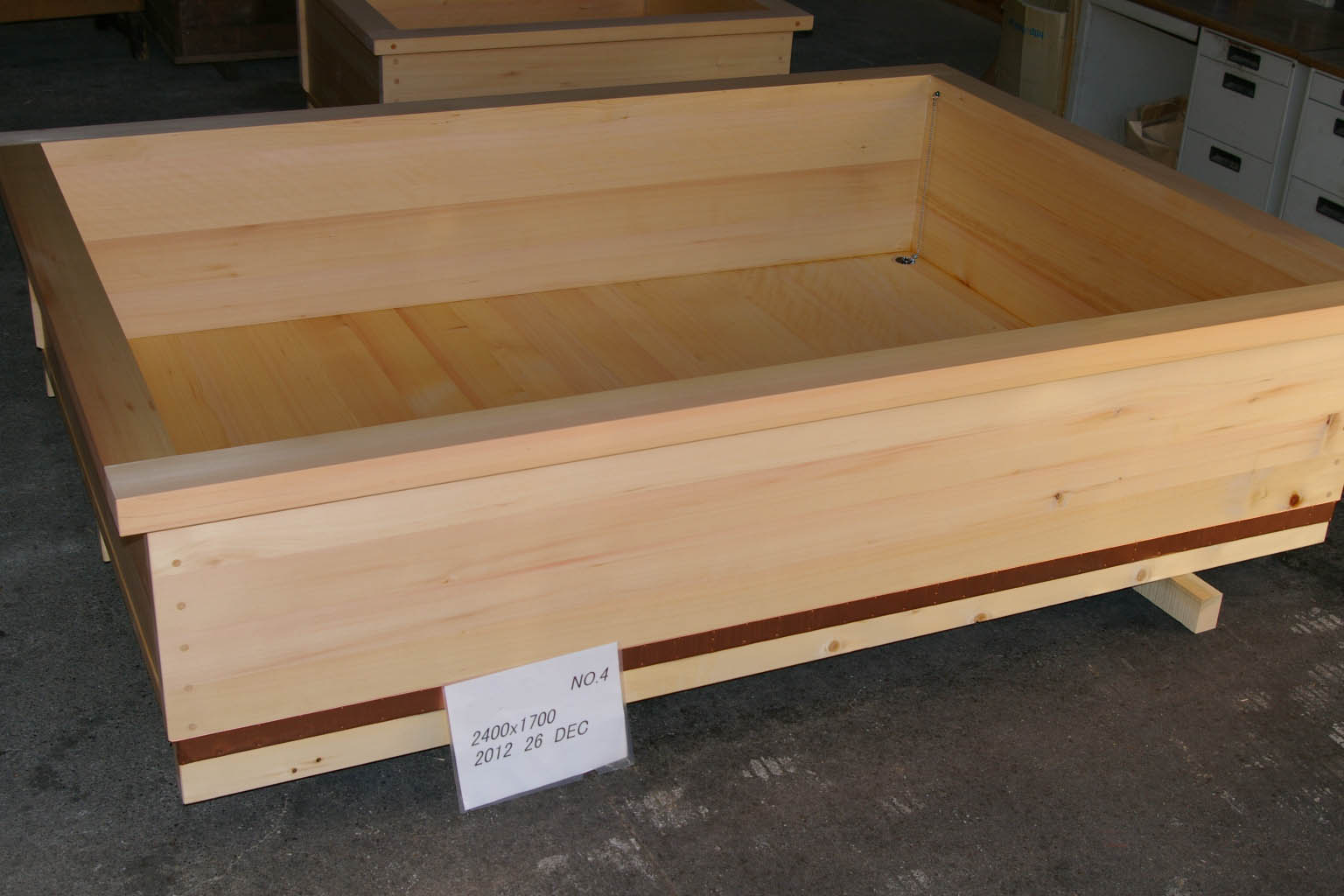
6 person Hinoki wood AB grade tub (1 piece)
Dimensions are: L2400mm x W1700mm x H570mm (ext. dim.) 483mm (deep)
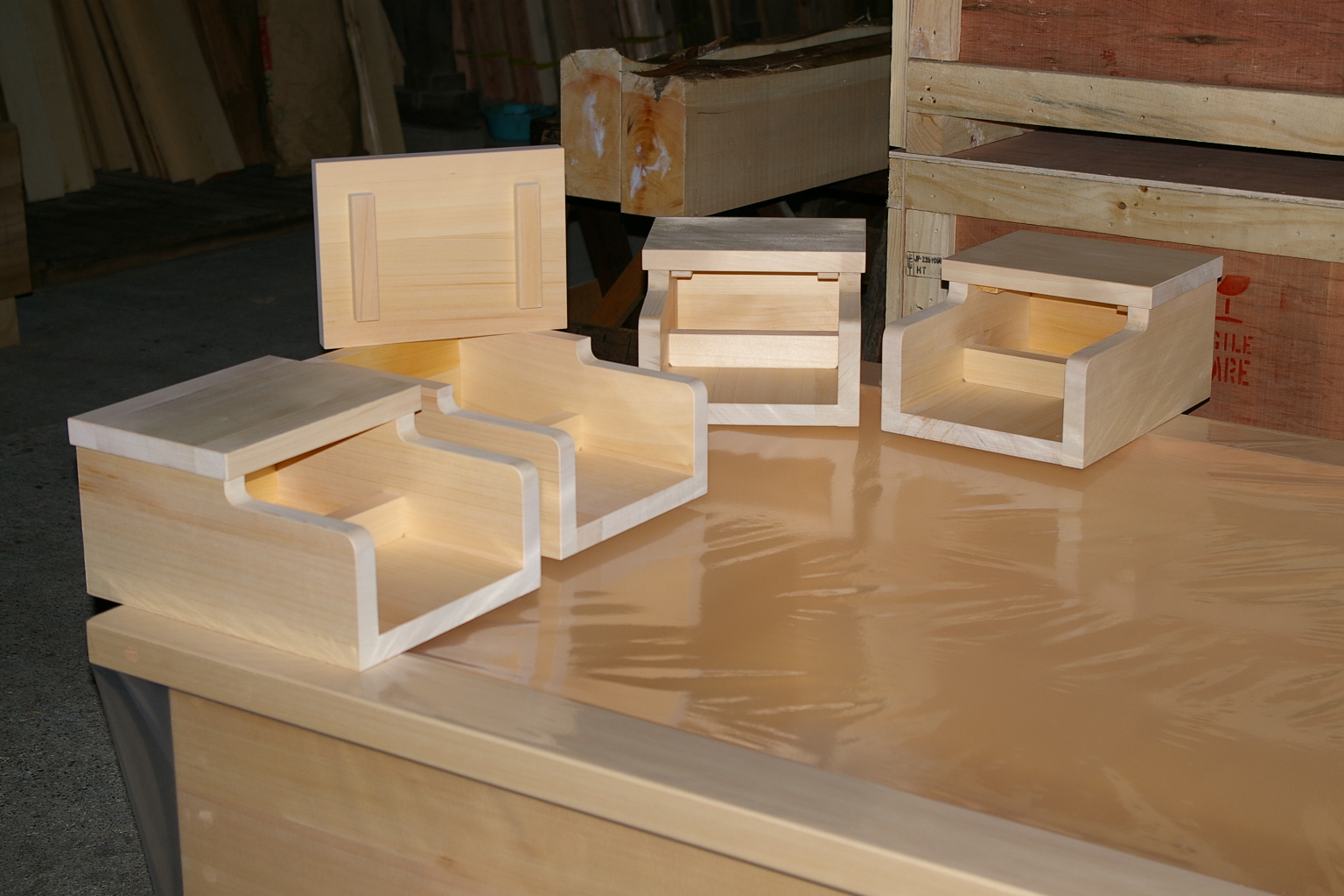
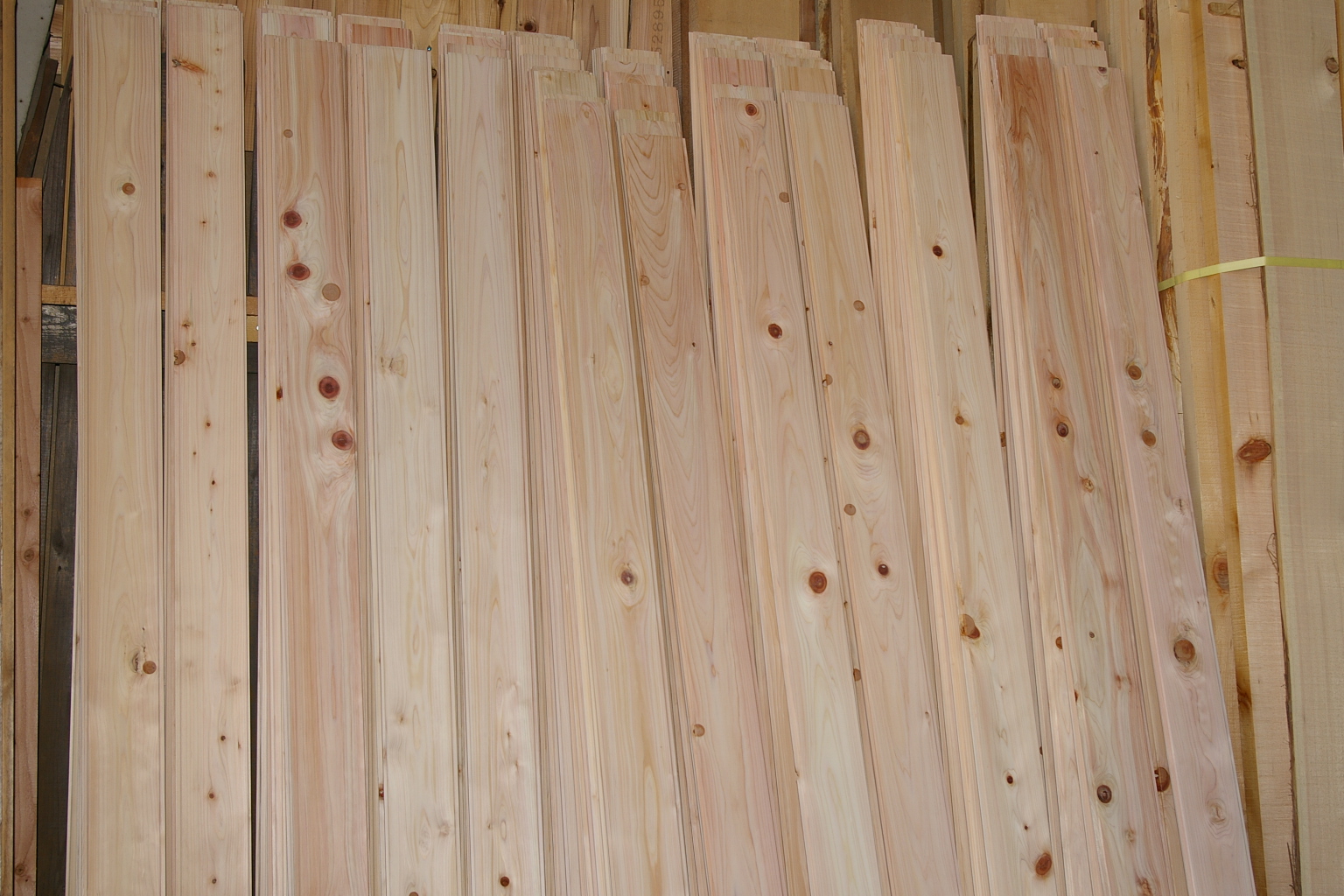
4 spouts in AB grade hinoki and
Wainscoting in knotty hinoki planks (L2000 x W105 x t12mm)















